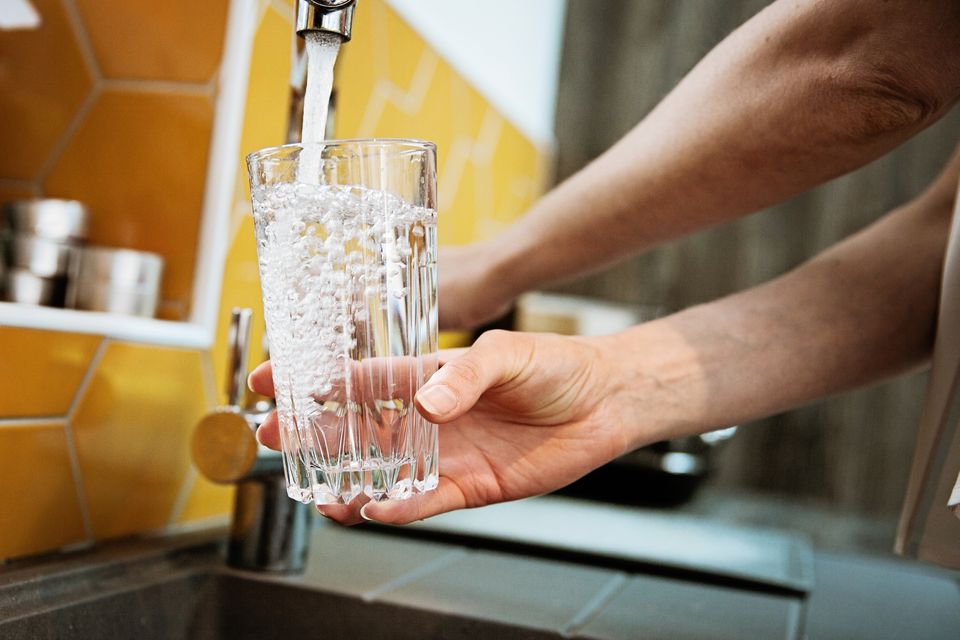‘In this day and age a child dying of a water-borne infection in Ireland is not good enough’
40pc of the country’s private wells are contaminated, with risks of serious E coli disease, scientists have warned – and half the population of rural Ireland could be affected. So why is there no State regulation or monitoring?
‘VTEC E coli patients are 3-4 times more likely to have consumed untreated well water’ Photo: Getty
If water samples from the country’s private drinking wells were taken, nearly 40pc would show levels of contamination.
“If that was a public supply, it would be shut down. Tankers of water would be brought in,” said Dr Paul Hynds of TU Dublin’s Environmental Sustainability and Health Institute, who has studied the water safety and quality of Irish wells for more than a decade.
From the block of cheese in your fridge to your front door, there are a set of rules governing quality and safety. Remarkably, though, for an estimated 800,000 people in Ireland, who use private wells for their drinking water supply, there is absolutely no regulation.
“Water sources in Ethiopia are regulated, but private wells in Ireland are not,” said Dr Hynds.
In his first PhD, he looked at hundreds of wells across Ireland, and during nearly two years of taking a sample every month, he got to know many of the families.
“One of these wells belonged to a dairy farming family. Their grandchild got sick from water from the well. He got hemolytic uremic syndrome from a STEC infection,” he said at a recent UCD Earth Institute event on the Hidden Hazards of Unregulated Private Wells.
“He then went into renal failure and got a 400pc blood transfusion. Every drop of blood in his body was replaced four times and he died.
“So in a country like Ireland, a rich country, we had a child die from a water-borne infection, and that was not on the Six One News.
“I’m an epidemiologist, and in this day and age, this is simply not good enough.”.
Also addressing the event was UCD’s Prof Eoin O’Neill, who set out the scale of the issue, highlighting that research suggests there are around 180,000 private wells in Ireland servicing about 16pc of the population, or about half the Irish rural population.
“These are unregulated private water supplies. There is no State monitoring and little to no State regulation,” he said.
Further, he said climate modelling suggests we are going to have wetter winters and drier summers, with more extreme weather events such as storms, flooding and more intense rainfall.
“Ideal conditions for the deterioration of water quality,” he said.
STEC and VTEC refer to a group of E coli bacteria that produce powerful toxins, which can cause severe illness.
“It became a notifiable disease in late 2011 and we have an upward trend in Ireland. There are also a disproportionate number of notifiable cases in Ireland and we are significantly outside the norms in Europe.
VTEC E coli rates in Ireland remain the highest in Europe at 19.3/100,000 in 2022. The EU average was 2.4/100,000 in 2018, with Norway, the country with the second highest rate, less than half Ireland’s at 9.3/100000.
“VTEC patients are 3-4 times more likely to have consumed untreated well water. Children under five and those over 65 are most vulnerable, and they are the most impacted,” Prof O’Neill said.
“There is a degree of immunity generated by consuming contaminated water, but you are exposing yourself to potential severe illness.”
Looking into the root causes of contamination in Ireland, he said private wells are typically untreated and water quality is not typically monitored, and he cited high levels of one-off housing, settlement patterns that involve co-location with septic tanks, proximity to cattle herds and changing weather patterns.
“In Ireland, you can see wells located cheek by jowl with neighbours’ septic tanks, and across the fence is herd cattle. So cross-contamination can occur,” he said.
Prof O’Neill also highlighted research showing how there can be a significant 2-3 month lag time in terms of the impact of severe weather such as flooding on water quality.
“There is consistent evidence about the nature and scale of the problem in Ireland,” he said.
“One of the problems is it falls into a space that requires a multi-stakeholder response. A lot of agencies have a role but perhaps there is not a lot of clarity. There is no one-stop shop.”
The Canadian province of Ontario, which has similar levels of private water sources, has made progress in tackling similar challenges.
“They had a free testing service, but nobody does this for no reason,” explained Dr Hynds
“There was a very large water-borne disease outbreak in the north of the province in 2000. Seven people died, and 1,300 got sick over the course of 2-3 days.
“This made the news across Canada and indeed globally, and it made Ontario look bad in terms of reputation.
“So, in an effort to improve things, they initiated this free testing programme. You just ask for a bottle, and it’s sent out, and you send it back.”
Annual testing rates have risen to 40pc in Ontario compared to just 7pc here.
“The Environmental Protection Agency here can say all they want about recommending you get your water tested once a year. The difference is in Canada, it’s zero cost, and in Ireland, in a commercial lab, it will cost you €200-300. Why would you do it?”
Further, he said, in Canada the result you get back is interpreted by a hydro-geologist and a public health expert, and you are told what actions to take, while the commercial lab here “sends you back a sheet of paper with a load of numbers on it”.
Inaction on the issue in Ireland is also coming at a cost, Dr Hynds said.
“In Canada, the experts believe the $2-3m cost of the programme saves the gov $50-70m per year.
“If anyone gets a bad case of STEC — and there are scores of other infections you can get — you will be off work for a week.
“If your child gets it, you will be going to an A&E, and they will potentially be in hospital for days and days.
“We believe every case of STEC in Ireland costs €2,500-€10,000, some of which is borne by the person who gets the infection, and a huge amount by the State.
“We are good with coming up with the numbers and we’ve done all the epidemiological work and sociological work.
“It’s kind of time we do something about this.”












